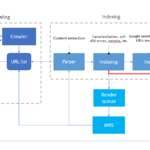STOP FALLING FOR THESE FAT LOSS MYTHS
By Smriti Pandey, Fittr Coach
#fittrcoach
🔍 Introduction: Confusion is the Real Enemy
In today’s world, everyone wants quick results—especially when it comes to losing weight or fat. Unfortunately, this urgency often leads us into a web of half-baked advice, internet trends, and fat loss myths that sound logical but are actually misleading.
As a coach, I’ve worked with hundreds of people who’ve wasted precious time and energy believing these myths. The truth? Fat loss isn’t complicated, but it does require you to separate fact from fiction. Let’s dive into some of the most common fat loss myths, and I’ll explain why they don’t hold up—and what actually works instead.
❌ MYTH 1: Carbs Make You Fat
✅ The Truth: Calorie Surplus Makes You Gain Fat
Carbohydrates have unfairly been villainized in popular diet culture. People think eating rice or bread will instantly lead to weight gain. But here’s the science:
You gain fat when you consume more calories than your body burns—regardless of whether those calories come from carbs, protein, or fat.
Carbs are your body’s primary energy source, especially for workouts and brain function. Cutting them unnecessarily can lead to fatigue, mood swings, and cravings.
What to do instead:
- Focus on your overall calorie intake
- Include complex carbs like oats, rice, roti, fruits, and vegetables in moderation
- Balance your meals with protein and healthy fats
You can absolutely eat carbs and still lose fat—as long as you’re in a calorie deficit.
❌ MYTH 2: You Can Lose Fat From Specific Areas Like Belly or Thighs
✅ The Truth: You Can’t Spot Reduce Fat
This is one of the most common and persistent myths. Doing endless crunches won’t magically shrink your belly. Why?
Your body decides where it loses fat first based on genetics, hormones, and gender.
For example, some people lose fat from their face first, while others notice it in their arms or hips. You can’t override this process.
What to do instead:
- Train your full body with strength workouts
- Combine it with calorie control and cardio
- Focus on body recomposition (gaining muscle + losing fat)
With time, fat loss will happen in your belly too—but not just by targeting it with exercises.
❌ MYTH 3: More Sweat = More Fat Burn
✅ The Truth: Sweating Is Just Water Loss
Many people equate a “good” workout with how sweaty they get. Yes, sweating is normal during exercise—but it’s not an indicator of fat burning.
Sweating is your body’s way of regulating temperature, not burning fat.
You might sweat a lot in a hot yoga class but burn fewer calories than in a strength workout with less sweat.
What to do instead:
- Track your progress via body measurements, strength levels, and consistency
- Don’t be fooled by “sweat suits” or excessive cardio—these just dehydrate you temporarily
- Prioritize progressive workouts, not sweaty ones
Chase results, not sweat.
❌ MYTH 4: Skipping Meals Will Speed Up Fat Loss
✅ The Truth: Skipping Meals Often Leads to Overeating
It might seem logical: fewer meals = fewer calories = faster weight loss. But in reality, skipping meals—especially without planning—leads to energy crashes, cravings, and binge eating later in the day.
Skipping meals often creates a cycle of deprivation followed by overindulgence.
Plus, it can negatively impact your metabolism, mood, and muscle preservation if done regularly.
What to do instead:
- Eat balanced, portion-controlled meals every 3–5 hours
- Include protein + fiber + good fats to stay full
- Track your calories to ensure you’re in a moderate calorie deficit
Eating regularly keeps you energized and in control.
❌ MYTH 5: Eating After 8 PM Leads to Weight Gain
✅ The Truth: Timing Doesn’t Matter as Much as Total Calories
Your body doesn’t have a “fat-storing clock” that activates after 8 PM. If your total calorie intake for the day is under your maintenance level, you will lose fat—even if you eat dinner at 10 PM.
Weight gain happens when you consume more calories than you burn—regardless of meal timing.
What can happen is late-night snacking leading to overeating, especially mindless eating of processed or high-calorie foods. That’s where the real risk lies—not the clock.
What to do instead:
- Plan your meals around your schedule
- If you eat late, ensure it’s still within your calorie target
- Choose lighter meals at night to aid digestion and sleep quality
It’s not “when” you eat. It’s “how much” you eat in total.
✅ What Actually Works for Fat Loss?
Let’s simplify it:
🔑 The Real Formula for Fat Loss
- Calorie Deficit: Eat slightly fewer calories than you burn
- Strength Training: Build muscle to boost metabolism
- Cardio: Helps improve endurance and adds to your calorie burn
- Good Sleep: Supports recovery and hormone balance
- Consistency + Patience: The only “magic” ingredient
Fat loss isn’t a quick-fix game. It’s a long-term commitment to small, smart choices made consistently over time.
💬 Final Words: Trust Science, Not Social Media
You’re not failing—you’re just misinformed.
Fat loss is a science, not a mystery. Don’t let myths derail your progress or damage your relationship with food. Educate yourself, take a sustainable approach, and remember—quick fixes don’t last, but consistency does.
Stay committed, trust the process, and your results will come.
Smriti Pandey
Fittr Coach | Certified Nutrition and Fitness Consultant
#fittrcoach #FatLossMyths #SmritiPandeyFitness #RealFitnessFacts #SustainableWeightLoss #FitnessEducation









